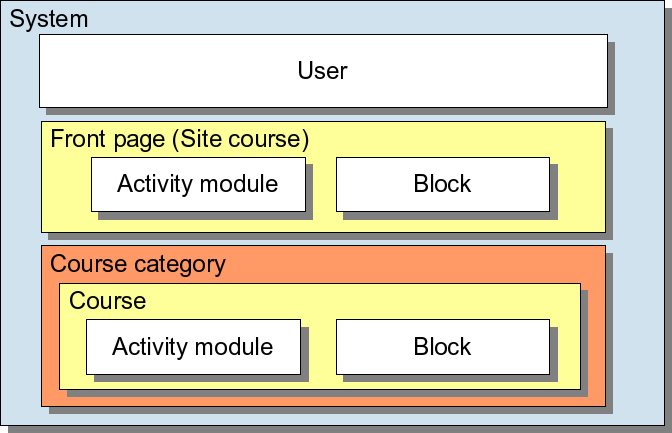Context
Template:Moodle site - basic structure
Please refer to these notes before editing this page.
A context is a "space" in Moodle. Together, they define the navigational structure of a Moodle site. A course can be a context, so can an activity, resource or block.
A course can have many contexts in its space. These might include lesson, assignment, forum and quiz modules and blocks. Or for example, Question bank's question categories are contexts.
Role contexts
A context is combined with Role permissions to define a user's capabilities on any page in Moodle. Typically contexts have their own organization structure which allow a user's role to be passed along to the context "below" but not to the one above it.
It is possible to assign a user different permissions based upon a specific context. For example, a user might be given the role of "student" for a course but be given a teacher's role in the context of one specific forum. Or a user can be a teacher of one course and a student in another course.
Many Moodle contexts have a place to grant exceptions to specific roles.
Graphic showing contexts within contexts
The image below shows a few contexts and their relationships. The "System" or Moodle site is the overall context. The user is defined iniially in this context.
- The System context has 2 contexts under it, with other context under them
- The Front page context has
- An activity module context and
- A block context within it
- The Course Cateory context has
- A Course context within it. The course context has
- An activity module context and
- A block context within it
- A Course context within it. The course context has
- The Front page context has
(Source: Development:Roles#Context)
See also
Moodle Docs
- Beginning Administration FAQ
- Roles FAQ
- Development:Roles#Context
- Development:Roles and modules#Context
- Roles and capabilities
- Role permissions
Forum discussions
